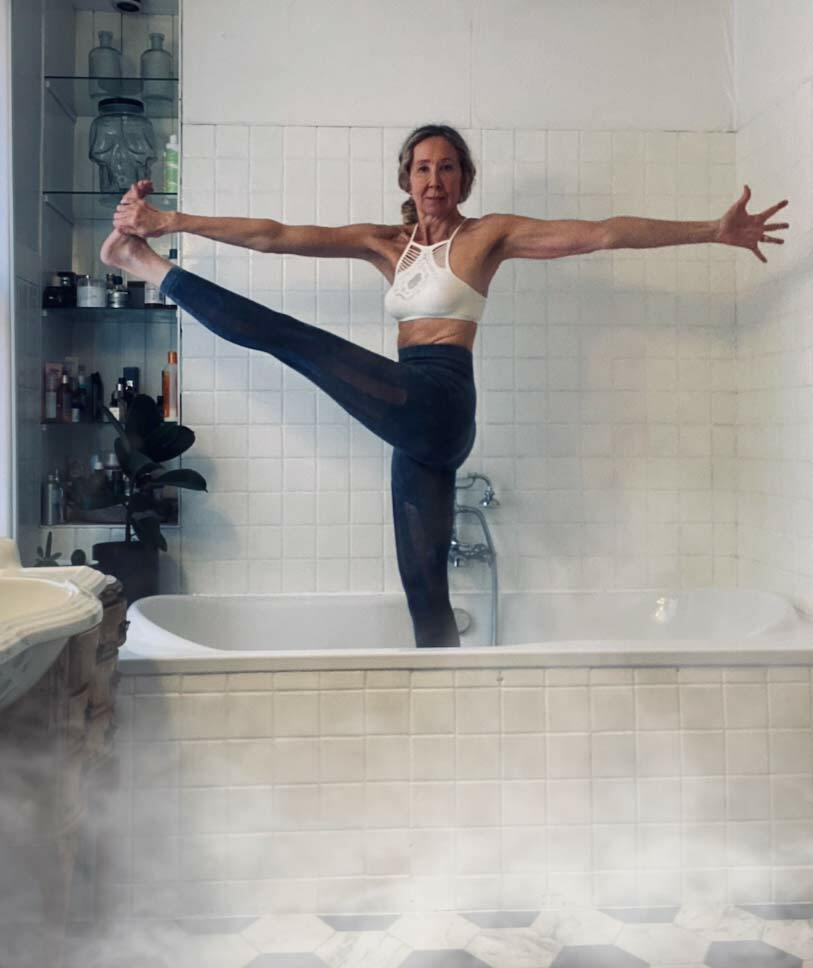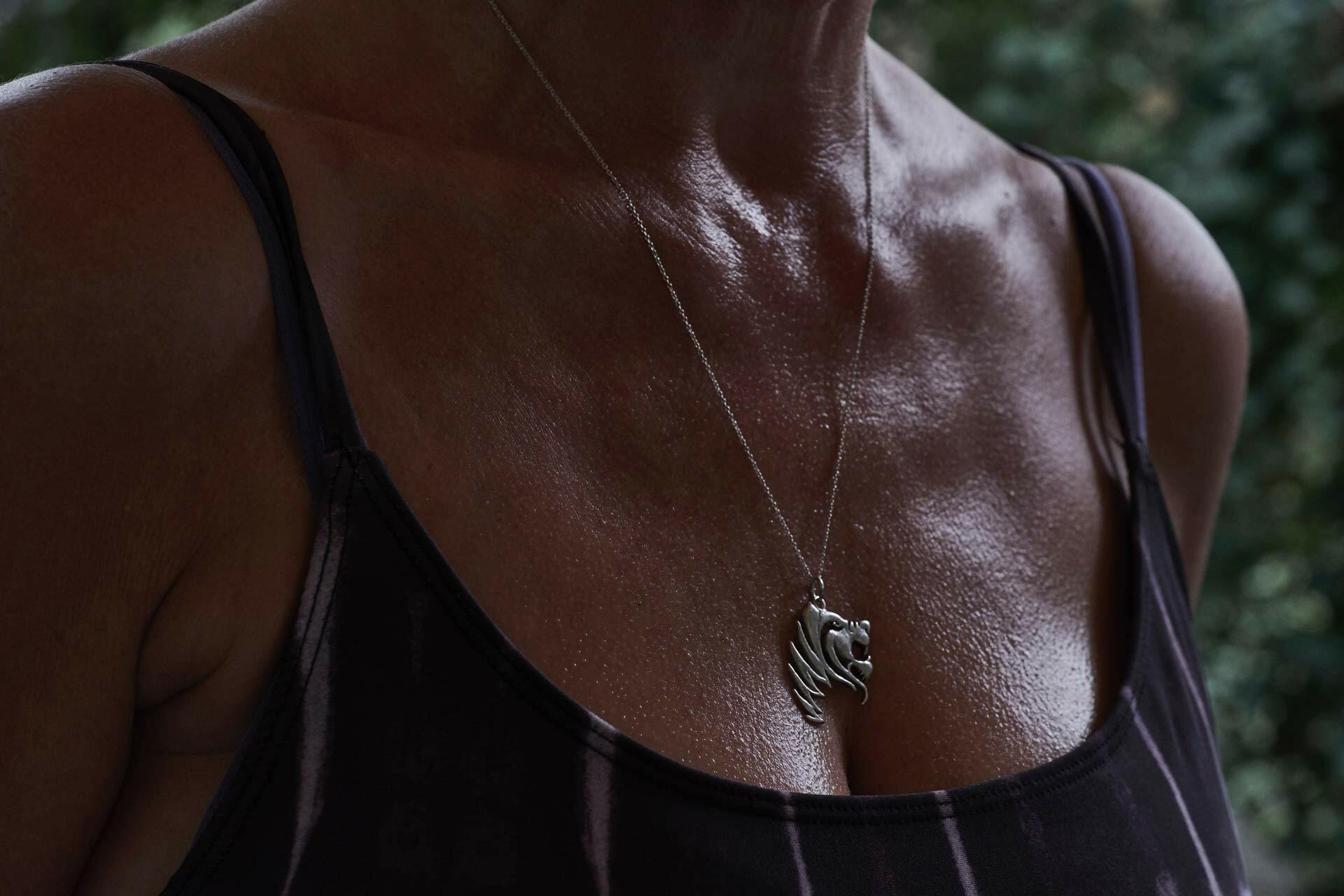From hanging your wet laundry on radiators to portable heaters and tents, Fierce Grace® founder (and Hot Yoga pioneer) Michele Pernetta, shares her best tips for recreating the Hot Yoga at home experience, whatever your budget and heat addiction level.
With lockdown extending well past anyone’s initial expectations, exercise fans have had to get extremely creative with their home setups. Sales of exercise bikes, weights, boxing bags, barre bars, bands and rowing machines have rocketed. We’ve tried live-streamed classes, pole dancing, kickboxing, meditation, yoga, tantra, the lot.
But Hot Yoga fans have had it hard. The many millions of people who enjoy the cathartic expansive experience of sweating and stretching in a heated room have found no solace in cold, unsatisfying yoga sessions on the kitchen floor. We yearn for the velvety feeling of the heated studio, with its perfect humidity level, its pumped oxygen and our glistening bodies shining in the ambient light.
As the months have progressed so has the avid hot yoga aficionado's creativity. A recent NY Times article reported people steaming up their bathrooms with hot running water and getting into Bakasana on the slippery floor. Someone used an electric blow heater as well - risking death for a sweat is lethally stupid (and illegal). Others are erecting their tent indoors with their electric blow heaters and inhaling hot oxygenless air that smells of plastic while they contort in sweaty bliss.

The Best Conditions for Hot Yoga
The ideal conditions for Hot Yoga, which millions of people swear by as an effective health practice, are 90-105°F and 40-50% humidity, fresh oxygen supply and air exchange.
The working temperature of your muscles and joints is over 100°F - that means the synovial fluid is thinner and can flow more easily around the joint, bringing nutrients and carrying away toxins. It's been reported that vasodilation occurs thus increasing circulation and blood flow. Muscles are warmed so you are less likely to feel stiff the next day. Humidity makes for a more comfortable experience. The whole body feels like stretching when it is warm and stretching is more comfortable and reportedly less likely to result in injury, due to the muscles being at their optimum temperature.
Recreating the Hot Yoga Experience at Home
Here are some tips for how to create a similar (safe) experience at home, depending on how much of a heat freak you are, your space and budget.
- Low level freak - low budget - have a hot bath, drink two cups of hot water, wear a couple of layers and crank up whatever heating you have. A breathing technique called Ujjayi where you constrict the throat muscles slightly to create a resistance also can also help increase body temperature.
- Medium heat freak - mid budget – an infrared patio heater is a good silent, portable option - they come on a high stand so are easy to direct and don't fry the cat. They are about £130 and after lockdown will enhance your outdoor dining. A powerful electric blow heater is small and compact and useful for heating a smaller space but can be noisy.
- Massive heat freak - high budget – If you have the luxury of a dedicated work out space, commercial infrared ceramic panels on the ceiling are a solution. Many people dislike that they heat your head more than your feet and its hard to control the heat. Gas fan heaters are the best and the choice of most hot yoga studios. They heat the air so it's comfortable to breathe and the body prefers the air it is breathing to match body temperature. They are, however, more expensive to install and bulky - so not good for the home.
Some heat worshippers with a large space have been buying inflatable domes for over a grand and cocooning themselves inside with a heat source and sweating to their heart's content. Ventilation might be an issue as well as any fumes or smells given off from heating up whatever the dome is made of so this should be thoroughly researched before purchasing.

Keep your Lungs Happy with Humidity
Most hot yoga studios operate at around 40% as that keeps your lungs happy and helps you attain that cathartic feeling seeing your sweat dripping onto your towel instead of instantly evaporating in dry heat.
- Low Budget - A) Hang your (clean) laundry on your radiators to dry. Eco-friendly and surprisingly effective. B ) People have been reported to be leaving their shower or bath water running on hot for 20 minutes to create a steam room and then practising their yoga in the bathroom (not eco friendly, and also slippery.)
- Medium budget - Buy a home humidifier.
- Higher Budget - Buy a commercial humidifier.
Accessories
- Mat - No mat will withstand being in a puddle of sweat. So you need a good grippy mat towel. Once a grip mat towel is damp it has much more grip than when it's dry.
- Water bottle/coolers - Those in the hot yoga industry know that you shouldn’t drink cold water when doing hot yoga. This is also ancient Indian yogic wisdom. And Chinese medicine wisdom. You should drink body temperature water only. It’s fascinating that people want hot yoga, and yet then try to cool themselves down with cold water. It actually results in making you feel hotter. Your body has to expend more energy to bring that water back to body temperature.
As the person who brought Hot Yoga to Europe in 1994 and who’s practised it for nearly 30 years, I feel it's good to remember the heat isn’t everything. The yoga is more important than the heat. The heat is a support. It's gorgeous when you have it, but if you don’t - just wear more, drink hot water, hold poses longer and work harder. You should still be able to get sweaty by holding poses longer engaging your muscles more and breathing well. That's why the term Hot Yoga no longer means anything. It's about the yoga ultimately. Not the heat.
There is a reason hot yoga studios spend many tens of thousands on creating the perfect environment. It’s hard to recreate this at home. But tenacity and an unwillingness to accept defeat are by-products of a yoga practise so we applaud hot yoga students creativity.


